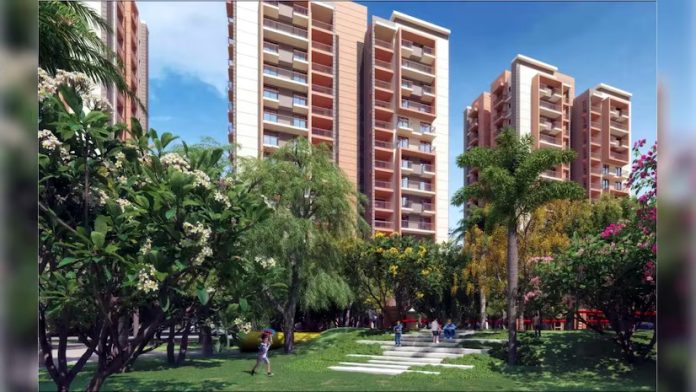NORMAL — As cities and towns along historic Route 66 prepare for its 100th anniversary in 2026, the iconic Sprague's Super Service Station in Normal is already at work restoring the site to its original state from the 1930s. "It was always my dream to take it back to the original footprint," said Terri Ryburn, owner of Ryburn Place Gifts & Gab at Sprague's Super Service Station, 305 E. Pine St.
in Normal. "All the contractors have been wonderful." Ryburn operates the gift shop, which sells all sorts of Route 66 souvenirs and memorabilia, inside the first floor of the station, while she lives in the second-floor apartment above the shop.

Work continues at Sprague's Super Service, 305 E. Pine St., Normal, to restore the Route 66 landmark back to its original appearance from the 1930s.
In early September, the restored Tudor Revival building — one of only five two-story gas stations left on Route 66 from Chicago to Santa Monica, California — had two non-historic additions demolished from the original portion of the building. The Normal Town Council approved a roughly $300,000 contract in October 2023 to restore the exterior elements of Sprague's Super Service Station , along with separate restoration projects at Broadview Mansion, 1301 S. Fell Ave.
, and the Hewett House, 202 W. College Ave., where the Ecology Action Center is located .
The contract was awarded to Normal-based developer J. Spencer Construction LLC, and the town allocated $100,000 toward Sprague's Super Service Station, $175,000 for Broadview Mansion and $25,000 for the Hewett House. The scope of work across all three sites includes selective demolition, masonry infill and tuckpointing, roof and soffit repairs, and window and siding repairs.
The non-historic additions at Sprague's included a stretch along the backside of the building, added in the 1940s to create a restaurant with a banquet room, kitchen and walk-in cooler. In 1967, a one-bay garage with an auto lift was added to the west side of the building. The non-historic addition to Sprague's Super Service Station, 305 E.
Pine St. in Normal, included a stretch along the backside of the building that was added in the 1940s to house a banquet room, kitchen and walk-in cooler. Ryburn Place has been closed during the demolition work and will reopen sometime this month, or whenever the town gives the all clear, Ryburn said.
They will close again for the offseason in January and February. The non-historic addition to Sprague's Super Service Station, 305 E. Pine St.
in Normal, included a one-bay garage in 1967. "The 100-year anniversary of the road is 2026, but I'm on a sort of grassroots committee here to plan some events, and we'll be coming out with something," Ryburn said. "I hope very shortly to announce what we're going to be doing.
" Terri Ryburn talks about her love of Route 66 history at Sprague's Super Service, 305 E. Pine St., Normal.
Mark Clinch, director of facilities and energy management in Normal, said now that the demolition of both additions is complete, contractors are working to survey the land around the building and cover holes in the building left from the addition's old doors and windows before winter weather sets in. The town will take the work that still needs to be done through the annual budget process to see what grants can be secured to continue funding the work, but the station should be fully completed by spring or summer 2026, in time for the Route 66 centennial, Clinch said. Work continues at Sprague's Super Service, 305 E.
Pine St., Normal. "We're going to restore the exterior, essentially, to what would have been original, to the degree that is possible," Clinch said.
"The demo went great, and there was no collateral damage to the original structure. Actually, that part couldn't have gone any better." He continued, "What got revealed, we expected, (and) it's kind of an unusual story.
Usually when you start tearing into something historic, you expect to have a few surprises, but (there was) nothing like that." Decades of Route 66 history Route 66 was only four years old when Bloomington businessman and contractor William W. Sprague built his two-story gas station in 1930.
At the time, the building housed a café, a Cities Service gas station, and a two-bay garage, in addition to living quarters above, according to Ryburn. By 1940, the four-lane alignment of Route 66 was completed around Bloomington-Normal, reducing traffic on the original 1926 alignment, Ryburn explained. The new alignment became known as Veterans Parkway — or the Beltline, to locals — and it was around this time that Sprague sold the station.
Over the years, the station passed through several hands, including in 1951, when then-owner Olin W. "Doc" Hetzler expanded to include Avis car rental and Yellow Cab businesses, an ambulance service, and a Greyhound bus stop, according to Ryburn. By the mid-1960s, Grady Roberson was running the gas station and garage while his wife, Catherine, operated a café on the east side of the building, Ryburn said.
Work continues at Sprague's Super Service, 305 E. Pine St., Normal.
The café closed in 1970, and by the mid-1970s, Beverly Hodge owned the building, where she operated a bridal shop, wedding cake and catering business and rented the upstairs apartments to Illinois State University students. Hodge later rented the upstairs out to various civic groups and even catered their meetings; she also rented out the garage and storage areas. In 1979, the gas tanks were removed, and the original gas pumps were sold.
Ryburn purchased the station in 2006, working to add it to the National Register of Historic Places in 2008 and into the Route 66 Association of Illinois Hall of Fame. In 2011, it became a local landmark property for the Town of Normal. Ryburn sold the service station to the town in 2016 .
In her 10 years owning the station, she had taught herself to write grants, and she received $375,000 from the National Park Service Route 66 Corridor Preservation Program and the state, in addition to other grants from the town, to help with maintenance, upkeep and renovations. "I struggled with that decision (to sell) because I put literal blood, sweat and tears in this, but the reason I ended up selling to the town is because they can guarantee that it won't be torn down," said Ryburn, noting that she invested about $90,000 in the building out of her own pocket. Work continues at Sprague's Super Service, 305 E.
Pine St., Normal. She later opened Ryburn Place Gifts & Gab on the first floor of the site, where she has since had visitors from 64 countries and all 50 states.
as well as Puerto Rico. She said she averages 500 to 800 visitors per month, with over 5,000 visitors per year. In this past July alone, Ryburn said she had visitors from 24 countries : Belgium, Canada, Chile, China, England, Finland, France, Germany, Ireland, Israel, Italy, Japan, Latvia, Mexico, New Zealand, Norway, Pakis tan, Poland, Portugal, Spain, Sweden, Switzerland, Turkey and the Netherlands .
Ryburn said her passion for Route 66 came about when she was 5 years old in the 1950s, when her father moved the family from Bloomington to California in a Model A truck that had been converted into a camper. Ryburn collected stories and memories from her life in her 2019 book, "No Crybabies Allowed: The Past as Told By Me." Among her other accomplishments, Ryburn has taught an ISU honors course about Route 66, and written her doctoral dissertation on Route 66, earning her the nickname "Dr.
66" upon her graduation 1999 from ISU. "I knew it could come back," Ryburn said of Sprague's Super Service. "I knew the importance of this building to Route 66 as well as to the town.
" To learn more about Ryburn Place at Sprague's Super Service Station and receive updates, visit ryburnplace.com or facebook.com/SpraguesSuperService .
With cars rapidly gaining popularity in the early 20th century, an American businessman in Tulsa, Oklahoma, had a vision of a network of highways connecting the whole country. Starting small in 1901 as a businessman and county commissioner, Cyrus Avery was nominated in 1925 to the newly formed Joint Board on Interstate Highways, a federal agency tasked with coordinating, organizing, and numbering the country's road system. Officially commissioned on Nov.
11, 1926, and first marked with roadside signs in 1927, Route 66—officially U.S. Highway 66—connected Chicago and Los Angeles, not coincidentally passing through Avery's adopted hometown of Tulsa, Oklahoma.
Just 800 of its 2,500 miles were paved in the new route's first year. Ahead of Route 66's 97th birthday, Stacker curated a slideshow highlighting the construction and early years of the iconic American road. In Tulsa, highway supporters—including Avery—in 1927 formed the U.
S. 66 Highway Association, an advocacy group to promote the new highway to drivers and tourists, as well as to policymakers who could approve funds for paving. The highway became nationally famous and earned the moniker " the Main Street of America .
" A major boost to the road's popularity came from John Steinbeck's 1939 book "The Grapes of Wrath," in which the author nicknamed Route 66 "the Mother Road" and chronicled the fictional Joad family's trip along the highway from Dust Bowl Oklahoma to the fruit fields of California. In the economic boom following the Great Depression and World War II, families—lured by history, popular culture, and countless tourist attractions—piled into their vehicles and set out to explore Route 66. The Interstate Highway Act of 1956 heralded the road's decline, as the smaller U.
S. routes were supplanted by massive, multilane interstates. But nostalgia kept the myth alive and even resulted in a resurgence of attention.
Much of the original Route 66 received a National Scenic Byway designation, with many stretches featuring tourist attractions, lodging, and food aimed at road-trippers exploring one of America's most iconic roads. Keep reading to discover more history of the iconic Route 66. Historic Illinois transportation maps show that one end of Route 66 abutted the Michigan Avenue entrance of the Art Institute of Chicago.
At the stairs leading up to the institute, a massive pair of bronze lions stare out. Sculpted by 19th-century American artist Edward Kemeys, they mark the historic start of the Mother Road. In early 1928, in part as a publicity stunt to promote the new highway, Illinois businessman and promoter Charles C.
Pyle announced a coast-to-coast footrace from Los Angeles to New York City running the length of Route 66 before shifting to other highways to get farther east. Nicknamed the "Bunion Derby" for the damage it was expected to cause its contestants' feet, the race began on March 4, 1928, and finished on May 26. It was won by Andy Payne of Claremore, Oklahoma, after 573 hours, 4 minutes, and 34 seconds of running, wearing through five pairs of running shoes over more than 3,400 miles.
The La Fonda Hotel in Santa Fe, New Mexico, is on the city's central plaza and claims to occupy the site of a hotel dating back to 1607. A luxurious hotel when its current building was built in 1922, generations of Route 66 travelers passed by with some almost certainly staying the night. Traveling "the Mother Road" like the Joads in Steinbeck's novel, Depression- and Dust Bowl-era refugees from Oklahoma sought new opportunities in California.
This famous image by iconic photographer Dorothea Lange is described in its Library of Congress record as "Depression refugee family from Tulsa, Oklahoma. Arrived in California June 1936. Mother and three half-grown children; no father.
" When Route 66 was first opened, its western end was at Seventh and Broadway in the heart of downtown Los Angeles. By 1947, when this image was taken, the route had been extended about 15 miles west to central Santa Monica. An unofficial "End of the Trail" marker was erected in 2009 on the Santa Monica Pier.
Route 66 connected many sections of rural America. Especially in the early days of the highway, travelers regularly passed by scenes of everyday life, like these basket-makers weaving white oak strips near Rolla, Missouri, in 1940. Seen here in 1956, downtown Tucumcari, New Mexico, was a key stopping point for travelers leaving West Texas.
Today, the town is home to the New Mexico Route 66 Museum and thoroughly embraces its Route 66 heritage with public art and neon signs. Service stations along Route 66 were essential stop points for motorists in need of fuel or food—particularly along western stretches through the desert in states such as Arizona. These businesses, along with others that sprung up to attract passersby, became key elements of the nation's growing car culture.
About 100 miles east of the end of Route 66 was Victorville, with a downtown hotel and shops on the corner of D and 7th. That neighborhood is the subject of a yearslong revitalization effort to reclaim some of its former glory. Halfway from Albuquerque to the Arizona state line is Grants, New Mexico, seen here in September 1950.
Drivers who—like Bugs Bunny in several cartoon episodes—missed a tricky left turn in Albuquerque might have needed help getting back on the right road before reaching Grants. Today, the town is home to an art museum with Route 66 memorabilia as well as exhibits of more modern local art. Some of America's love affair with cars and the open road might be due to vistas like this one from New Mexico in 1940: No traffic in sight, a clear sky, mountains in the distance, and a lovely smooth strip of pavement just waiting to be driven.
Mac's Iceberg Cafe and Gas Station, found on East Central Avenue in Albuquerque, was a classic only-in-America, only-on-Route-66 roadside attraction designed to make a spectacle—and a must-stop destination—for tourists. Of course, ice cream and gas were major attractions of their own for weary travelers. During the early 1940s, the war effort brought people from all over the U.
S. to California factories and shipyards. After the war, people headed back to where they came from—including the family pictured here, pulling a trailer behind their vehicle on their way from California to Minnesota less than two weeks after Japan surrendered.
Finished in 1965, the Gateway Arch in St. Louis reflected the nation's urge for westward expansion. It was visible to anyone driving on Route 66 across the Mississippi River.
Will Rogers, an Oklahoma native, was an early multimedia star known for performances in vaudeville and Broadway shows, movies, and radio spots, and for writing humorous and sharp political commentary in newspaper columns around the country. A member of the Cherokee Nation, he became known as the "Cowboy Philosopher" for his witty insights and clever sayings. The New York and Hollywood star drew attention around the world, which he traveled extensively before being killed in a 1935 plane crash in Alaska.
Rogers was memorialized with a statue and museum in Claremore, Oklahoma, along Route 66. The Tomahawk Trading Post outside Albuquerque offered many enticements to draw tourists in, including a live Gila monster. It was not nearly as large as the painted sign might have suggested.
Though wildly popular with tourists, Route 66 was originally envisioned as a boost to commerce. Trucks like this one photographed in 1968 carried freight all along it for decades until wider, faster interstate highways were built. The road was wide and busy as Route 66 travelers drove through Albuquerque in 1969.
Gas stations, hotels, and fast food were all eager to attract customers on the Mother Road. The Jack Rabbit Trading Post near Joseph City, Arizona, was one of many roadside attractions along Route 66. It's still there, but sometime since this 1958 photo a different statue of a jackrabbit has been installed out front.
Souvenirs like the one the child is wearing here often echoed stereotypes of the time period and highlighted the fact that the road passed through Indigenous lands. Native Americans found opportunity along Route 66—and still do—with an online tour guide to American Indians and Route 66 produced by the American Indian Alaska Native Tourism Association. In this photo from 1979 in Winslow, Arizona, a roadside stop displays and sells local Native American arts and crafts.
As Route 66 passes through the Petrified Forest National Park in Arizona, vistas open in front of the windshield and the true expanse of the American West becomes apparent. Just along Route 66 in Amarillo, Texas, is the Cadillac Ranch, where 10 old Cadillacs are partially buried, hoods down, as monuments to car culture—and, as Bruce Springsteen had it in his 1980 song—a metaphor for how what once was valuable often becomes disposable. It's still there drawing tourists today.
The Cowboy Motel in Amarillo, Texas, seen here in 1977, was one of many roadside lodgings that traded on kitsch and stereotypical Western themes to draw customers. The Wigwam Village Motel in Holbrook, Arizona, pictured here in 1979, still offers travelers a chance to sleep in structures inspired by traditional Native American teepees—intentionally misnamed "wigwams" by the non-Indigenous architect who designed them. The motel is on the National Register of Historic Places because of its significance to Route 66 heritage.
From the late 1930s, Route 66 officially ended at the corner of Lincoln and Olympic boulevards in Santa Monica. But that wasn't a very dramatic location, so the unofficial end became the entrance to the Santa Monica Pier. Story editing by Nicole Caldwell.
Copy editing by Tim Bruns. Contact Mateusz Janik at (309) 820-3234. Follow Mateusz on Twitter:@mjanik99 Get local news delivered to your inbox! Subscribe to our Daily Headlines newsletter.
Government Reporter {{description}} Email notifications are only sent once a day, and only if there are new matching items..



















